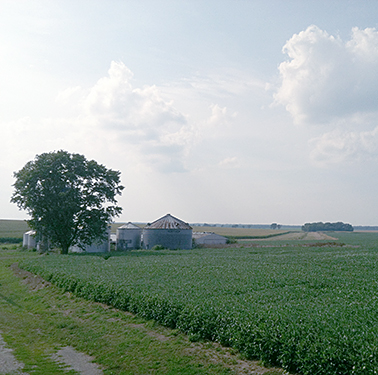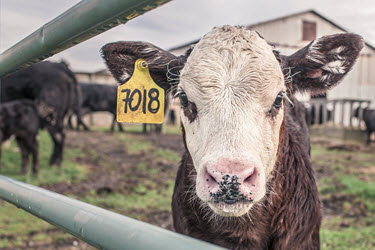THE OPEN
May beans: 8 higher
May meal: .30 higher
May soyoil: 1.25 higher
May corn: 3/4 lower
May wheat: 2 lower
The markets opened as called with the soy complex rebounding off its low pulling corn higher. Wheat futures continued lower as funds sold as a hedge against length elsewhere on the board. Wheat prices continued to head lower during the session breaking into new lows. Wheat weakness was the dominating trend into the numbers against a higher soy complex trade.
At 11:00 the report was as follows:
QUARTERLY STOCKS (million bushels)
3/1/21 Avg High Low 12/1/20 3/1/20
Corn 7,701 7,778 7,980 7,573 11,322 7,952
Soybeans 1,564 1,561 1,825 1,455 2,933 2,255
Wheat 1,314 1,272 1,405 1,227 1,674 1,415
PROSPECTIVE PLANTINGS
ACREAGE (million acres) USDA USDA
3/31/21 Avg High Low 2019/20 3/31/20
Corn 91.1 93.1 94.5 92.0 90.8 97.0
Soybeans 87.6 90.0 91.3 88.9 83.1 83.5
Cotton 12.0 11.5 12.1 13.7
All Wheat 46.4 45.2 46.4 44.4 44.3 44.7
Winter 33.1 31.8 32.2 30.4 30.4 30.8
Spring 11.7 11.8 12.9 11.0 12.3 12.6
Durum 1.5 1.6 1.8 1.3 1.7 1.3
The report was bullish with total acres well under expectations at 178.7 mln vs. expectations of 183.20 mln, a major surprise to the market.
USDA comments:
Corn: Stocks down 3% from March 2020. From USDA report: Of the total stocks, 4.04 bln bu were stored on farms, down 9% from yr ago. Off-farm stocks, at 3.66 bln bu, were up 5% from year ago. Dec 2020-Feb 2021 indicated disappearance is 3.59 bln bu vs. 3.38 bln year ago.
Beans: Stocks down 31% from March 2020. From USDA report: On farm stocks are estimated at 594 mln bu, down 41% from year ago, with off-farm stocks at 970 mln bu, down 22% from last March. Indicated disappearance for the Dec. 2020-Feb. 2021 quarter totaled 1.38 bln bu, up 39% from yr ago.
All wheat: stocks down 7% from year ago. USDA put on -farm stocks at 284 mln bu, down 16% from last March. Off-farm stocks at 1.03 bln bu are down 4% from year ago. The Dec 2020-Feb. 2021 indicated disappearance is 388 mln bu, 9% below same period year earlier.
SOY
- The soy complex traded higher with oilshare finding upside momentum as soyoil rebounded off the lower end of trading ranges. Bean trade was higher on a combination of new buying, short-covering, and pricing, as traders viewed the break as a place from which to own the market. Spreads were weaker into the report, however, with July/Nov beans breaking down to 1.69 1/4c inverse from 1.76c, as May /July consolidated from 8 1/2c to 11c. July oilshare trades around 38.0% while crush trades down to 54c/bu.
- Meal prices are largely ignored heading into the report, while soyoil prices trade from 50c-52c on a good bounce. Buy bean/sell wheat trade continues as a mini-trend into the opening numbers, as the report was expected to be a mostly neutral event for wheat. Firmer energies helped soyoil to stabilize, as expectations continue that vaccines are going to spur on new travel. Canola prices found new buying at chart lows, with a modest bounce in the May contract from lows of $715.60.
- After the numbers were released, the sharp rally higher confirmed trading ranges that may in fact attract new buying interest.
- May beans jump limit to trade to the level from which prices broke and the top of the market into the report at $14.35, while May meal finally finds its footing trading to the upside of a down-trend channel, confirming that perhaps $395.00-$400.00 is a value base of trade.
- May soyoil prices recoup losses and begin what appears to be a congestion phase from 51c-56c.
- November beans trades back to its key resistance level of $12.45, the spot from which prices broke this week. Look for pullbacks to now find buying interest.
GRAINS
- Corn and wheat prices took separate paths in the early morning hours of trade. Wheat futures trend lower as expectations are for a neutral event here, but ideas mixed elsewhere. Into the report nearby corn spreads were firm with the inverse trading at 18 1/4c on firm cash values and tight supply. Jly/Dec corn leaned lower into the report trading from 67 1/2c up to 70 1/4c.
- While US ethanol production has not returned to pre-pandemic levels, expectations for more travel suggests that the industry will continue to make a comeback. The EIA report today showed ethanol production up 4 1/2%, more than expected, to 965,000 bbl/day utilizing 5.1 bln bu of corn. Ethanol stocks fell 3.2% to 887 mln glns on stronger demand.
- After the report, May corn exceeded its previous trading range high resistance level of $5.55/$5.58 locking limit at $5.64 1/4. May wheat trades higher but cannot quite get the same strength as corn or wheat. Would note that while wheat acreage overall was higher, it was also the fourth lowest since record keeping started in 1919.
- Corn spreads jump with May/July setting a new inverse high at 19 3/4c, while July/Dec jumpts to 83 1/2c from 67c. December corn regains its footing having now validated that $4.50 is a bottom in a trading range that is on the move towards new highs. Synthetically, May corn is now trading towards $5.80.
AT 12:00 THE MARKETS ARE AS FOLLOWS:
HI LO
May beans: 70 higher 14.36 3/4 13.64 3/4
May meal: 23.70 higher 423.20 397.70
May soyoil: 2.36 higher 52.96 50.22
May corn: 25 higher 5.64 1/4 5.37 1/2
May wheat: 19 higher 6.31 3/4 5.93 1/4
May canola: 29.20 higher 753.70 715.60
OUTSIDE MARKETS
Stocks traded both sides of even into the morning hour but at midday trade is up 26 pts. The US dollar trades lower to 92.98, while crude oil trades to $59.96/barrel.
CLOSING COMMENTS
Given the new numbers today, the ball-game goes back in the bull's favor. Funds are long and for now rewarded. The report today, a surprisingly friendly one, now makes the US planting season that much more important in terms of needing it to be ideal. Any hiccups or weather problems will create more upside. The total acreage package will leave the balance sheets in rationing mode once again. The numbers could be viewed with a great deal of skepticism, but the market has to trade them.
The charts are now back in sideways to higher mode, but pullbacks are going to be viewed once again as a buying opportunity, except perhaps for wheat. Between the negative macros and unwinding of long commodity/short US dollar trades, we have now seen the extent of our trading ranges. Would not look to return to the lows posted this week anytime soon. New target highs include $4.95/$5.00 Dec corn, $12.75/$13.00 Nov beans, while wheat trades back again in a $6.00-$6.50 range following strength in other markets. Look for pullbacks to see buying interest, and for follow-through buying from the short caught at the bottom, consumers raising pricing ideas, and new chart based technical interest on the long side. Open gaps on the upside will be a clue as to how much higher these markets will want to move.
TAGS – Feed Grains, Soy & Oilseeds, Wheat, North America

 Corn, soybeans and soyoil all closed lower after trading up the previous three sessions. July soymeal made it a fourth trading session higher, and wheat remains on a tear with a fifth trading session closing higher. The mood around wheat sees supply concerns developing in North America and in t...
Corn, soybeans and soyoil all closed lower after trading up the previous three sessions. July soymeal made it a fourth trading session higher, and wheat remains on a tear with a fifth trading session closing higher. The mood around wheat sees supply concerns developing in North America and in t...
 Cow-calf producer margins are discussed less frequently in these pages than their downstream counterparts of feedlot and beef packer margins, but this doesn’t mean they are less important to understanding the beef industry’s current state and outlook. Additionally, discussion of thi...
Cow-calf producer margins are discussed less frequently in these pages than their downstream counterparts of feedlot and beef packer margins, but this doesn’t mean they are less important to understanding the beef industry’s current state and outlook. Additionally, discussion of thi...
 Reigniting a Transatlantic Deal Former Italian prime minister Enrico Letta is something of a policy rock star after authoring a report on the future strategy for the EU. Most of the 146-page report focuses on strengthening the EU’s internal Single Market but, buried at the end of th...
Reigniting a Transatlantic Deal Former Italian prime minister Enrico Letta is something of a policy rock star after authoring a report on the future strategy for the EU. Most of the 146-page report focuses on strengthening the EU’s internal Single Market but, buried at the end of th...